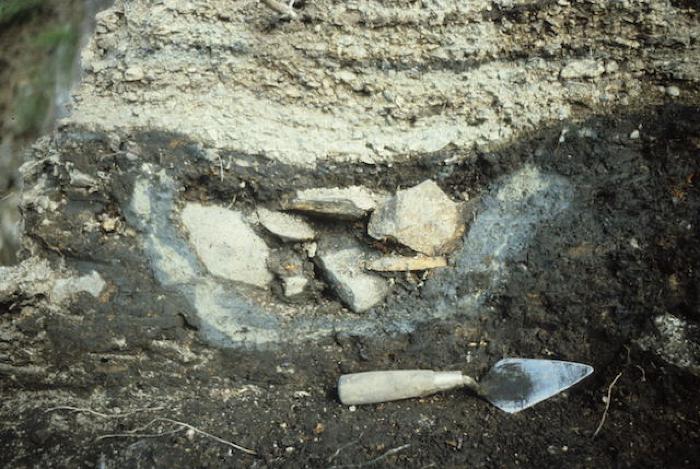Clay — Qikuq

Clay, a substance found in most types of soil, is made up of minute particles of silica and alumina bound together by water. This sediment forms as the surface of the earth weathers, breaking rocks into smaller and smaller pieces. In the Kodiak Archipelago, weathering of the islands’ slate and granite core during the last glacial epoch created distinctive deposits of blue clay. This clay is widely available, particularly in areas once covered by glacial lakes.
Throughout the world, craftsmen mine clay to mold this supple material into useful shapes. Alutiiq people are no exception. They once created clay-lined cooking features around household hearths. Archaeological data suggests that small clay-lined pits held water and acted as cooking vessels for soups and stews heated with hot rocks. Clay-lined troughs leading into these pits may have captured the oil exuded by chunks of blubber set by the fire to melt.
Alutiiq people also lined underground pits with thick layers of clay. These large depressions, dug into the soil beneath household floors, acted like root cellars. Here, foods could be stored or fermented in the cool ground. People sealed some of the pits with a clay cap. Others had a stone or wooden lid.
Alutiiq people also used clay to manufacture fired ceramic pots. There are no historic descriptions of this process, but it has been determined from the study of pot fragments and a few complete pots from archaeological sites. These finds suggest that people mixed clay with beach gravel and formed it into large, thick-walled, conical pots with a flat base. These vessels were hardened by firing, and then used for cooking and rendering oil. Some of these ceramic pots were finished with decorated applique rims.
In the nineteenth century, Alutiiq people adopted a variety of European items made from clay. These included English ceramics and delicate tobacco pipes made in Europe of white kaolin clay.
